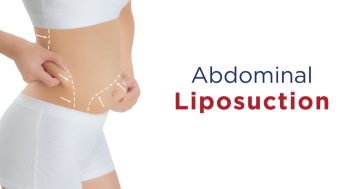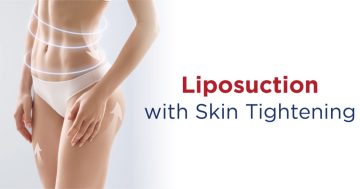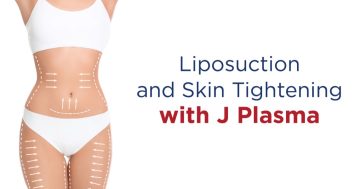Although Liposuction can help you achieve a more attractive figure, it is not a good option for people who are extremely overweight and wish to lose weight rapidly. While liposuction cannot reduce body fat all over the body, it can reduce the amount of fat that has accumulated in certain areas, enhancing the appearance and confidence of your shape.
Liposuction involves inserting a long tube-like instrument under the skin in order to extract excess fat from the abdomen, hips, buttocks, thighs, upper arms, neck, and other regions. Individuals who are not overweight and have localized fat with elastic skin can benefit from liposuction. The candidates should have healthy mental and physical health. You can have liposuction at any age, but you should first discuss the desired results with the surgeon.
Liposuction is a cosmetic surgical procedure that helps produce a more proportionate and taut body shape through the removal of extra fat from the belly, upper arms, thighs, hips, and other parts of the body.
Common liposuction techniques
- Tumescent Liposuction: This straightforward and widely used procedure involves injecting a special solution into the target areas in order to break up fat cells and facilitate fat removal.
- Ultrasound-Assisted Liposuction (UAL): In this procedure, high-frequency sound waves are used to break up fat cells and facilitate fat removal.
- Power-Assisted Liposuction (PAL): In this procedure, a vibrating cannula is used to break up fat cells and facilitate fat removal.
- Vaser Liposuction: In this procedure, special high-frequency sound waves are used to precisely remove fat and minimize damage to surrounding tissue.
- BodyTite: This innovative procedure combines liposuction with radiofrequency (RF) energy. Compared to conventional liposuction, this procedure can effectively tighten the skin and produces better results.
Surgical procedures
Prior to the surgery, the liposuction site is marked by a surgeon. Subsequently, 0.5–1.5 cm tiny incision is made on the skin, and a thin tube called cannula is placed beneath the skin, its tip in the layer of fat. This cannula is attached to an ultrasound machine or vacuum pump. To help break up fat cells and facilitate fat removal, the vacuum cannula is dragged in and out. The surgeon may need to make more than one incision to achieve the best results. A small amount of blood is lost during liposuction. Depending on the liposuction site and the extent of fat removal, either local anesthesia or general anesthesia may be needed during this procedure. The affected area and degree of fat deposition determine the extent of fat removal. Following surgery, the liposuction site is wrapped with sterile cloth or bandage for a period of two to five days.
Details of the liposuction procedure
Pre-operative preparation: In addition to assessing your physical condition and appropriateness for surgery, the doctor will perform a physical examination, a blood test, a chest X-ray and give you guidance on how to prepare for the procedure, including avoiding particular foods and medications. This includes refraining from alcohol and tobacco use.
Surgical procedures: An injection of local or general anesthesia is given to the patient. A tiny incision is made in the liposuction site, and a cannula is placed to remove the fat. After liposuction, the incision is closed with absorbable stitches.
Post-operative care:
- Wear a compression garment to reduce swelling and help tighten the skin
- Take medication as prescribed by your doctor
- Clean the wound as advised by your doctor
- Avoid strenuous activities during the initial period
- Schedule a follow-up appointment with your doctor as scheduled
Considerations:
- Skin condition: Consider getting a skin tightening surgery if the skin is extremely saggy.
- Fat volume: Liposuction may not be sufficient if there is a significant buildup of fat. There may be a need for additional methods, such diet and exercise regimes.
- Expectations: It is best to consult your doctor to learn about the anticipated outcomes and possible risks.
What is liposuction?
Liposuction is a medical procedure that helps remove excess fat from the body. The doctor inserts a small tube under the skin to suck out fat from the desired area, such as the abdomen, thighs, upper arms, hips or other areas with accumulated fat.
Reasons to have a liposuction
- Get rid of excess fat: Liposuction helps get rid of excess fat that is resistant to natural weight loss techniques.
- Body shaping: It aids in reshaping the body to be firmer and more proportional.
- Boost self-confidence: Promotes self-confidence in personality and physical appearance.
- Instant results: Instant, visible results
Who is a good candidate for liposuction?
- Healthy people
- People with a stable weight
- People with excess fat that is resistant to natural weight loss techniques
- People who are not pregnant or breastfeeding
What to know if you’re considering liposuction
- Medical consultation: Speak with a medical expert to determine appropriateness, make a treatment plan, and comprehend possible risks and side effects.
- Choosing the right medical facility: Choose a licensed medical facility to ensure patient safety, quality care, and good results.
- Following your doctor’s instructions before and after liposuction is important.
Post-operative self-care
- Wear a compression garment to help reduce swelling and tighten the skin
- Avoid strenuous exercise in the early days after liposuction
- Consume a nutritious diet to hasten your body’s healing process
- Give up alcohol and tobacco to lower the risk of complications
- Quit smoking and drinking alcohol to reduce the chance of complications



